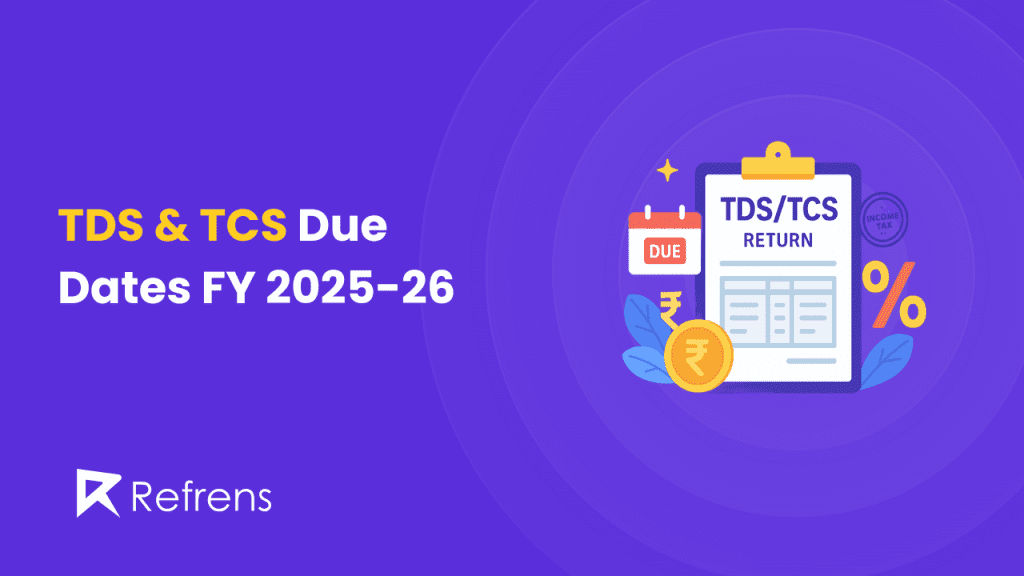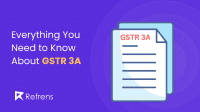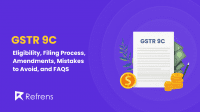Staying compliant with tax regulations is non-negotiable for businesses and professionals in India. Timely deduction, collection and deposit of Tax Deducted at Source (TDS) and Tax Collected at Source (TCS) – along with filing the respective returns is a crucial part of running the business. Missing a due date can lead to interest, penalties, and even notices from the Income Tax Department.
As the financial year 2025-26 begins, this guide aims to give you a clear roadmap of all the important TDS and TCS deadlines. Be it an employer, accountant, consultant/freelancer, or HR professional, this complete guide will help you avoid last-minute hassles, ensure timely filings, and stay on the right side of tax laws.
TDS (Tax Deducted at Source) is a way for the government to collect tax at the very point where income is generated. The person making a payment—like salary, rent, or contractor fees, deducts a certain percentage as tax before paying the recipient. This deducted amount is then deposited with the Income Tax Department. TCS (Tax Collected at Source) is collected by the seller while receiving payment from the buyer on certain goods or services—like alcohol, scrap, or overseas remittances. The seller then deposits this tax with the government.In both cases, the deducted or collected tax is reflected in the recipient’s Form 26AS and can be adjusted against their final income tax liability. |
TDS Due Dates – FY 2025–26
If you’re deducting TDS monthly, you need to:
1.Deposit it by the 7th of the following month
2.File quarterly TDS returns (Form 24Q/26Q/27Q) by 31st of the month following the quarter (except March)
3. Issue TDS certificates (Form 16/16A) by 15th of the month after filing quarterly TDS Returns.
| Quarter | Month of Deduction | TDS Deposit Due Date | TDS Return (Form 24Q/26Q/27Q) | TDS Certificate (Form 16/16A) |
| Q1 | Apr ’25 | 07/05/2025 | 31/07/2025 | 15/08/2025 |
| May ’25 | 07/06/2025 | 31/07/2025 | 15/08/2025 | |
| Jun ’25 | 07/07/2025 | 31/07/2025 | 15/08/2025 | |
| Q2 | Jul ’25 | 07/08/2025 | 31/10/2025 | 15/11/2025 |
| Aug ’25 | 07/09/2025 | 31/10/2025 | 15/11/2025 | |
| Sep ’25 | 07/10/2025 | 31/10/2025 | 15/11/2025 | |
| Q3 | Oct ’25 | 07/11/2025 | 31/01/2026 | 15/02/2026 |
| Nov ’25 | 07/12/2025 | 31/01/2026 | 15/02/2026 | |
| Dec ’25 | 07/01/2026 | 31/01/2026 | 15/02/2026 | |
| Q4 | Jan ’26 | 07/02/2026 | 31/05/2026 | 15/06/2026 |
| Feb ’26 | 07/03/2026 | 31/05/2026 | 15/06/2026 | |
| Mar ’26 | 30/04/2026 | 31/05/2026 | 15/06/2026 |
TCS Due Dates – FY 2025–26
If you’re collecting TCS monthly, you need to:
1. Collect it by the 7th of the following month
2. File quarterly TCS returns (Form 27EQ) by the 15th of the month following the quarter.
3. Issue TDS certificates (Form 16/16A) by the 30th of the month following the quarter.
| Quarter | Month of Collection | TCS Deposit Due Date | TCS Return (Form 27EQ) | TCS Certificate (Form 27D) |
| Q1 | Apr ’25 | 07/05/2025 | 15/07/2025 | 30/07/2025 |
| May ’25 | 07/06/2025 | 15/07/2025 | 30/07/2025 | |
| Jun ’25 | 07/07/2025 | 15/07/2025 | 30/07/2025 | |
| Q2 | Jul ’25 | 07/08/2025 | 15/10/2025 | 30/10/2025 |
| Aug ’25 | 07/09/2025 | 15/10/2025 | 30/10/2025 | |
| Sep ’25 | 07/10/2025 | 15/10/2025 | 30/10/2025 | |
| Q3 | Oct ’25 | 07/11/2025 | 15/01/2026 | 30/01/2026 |
| Nov ’25 | 07/12/2025 | 15/01/2026 | 30/01/2026 | |
| Dec ’25 | 07/01/2026 | 15/01/2026 | 30/01/2026 | |
| Q4 | Jan ’26 | 07/02/2026 | 15/04/2026 | 30/04/2026 |
| Feb ’26 | 07/03/2026 | 15/04/2026 | 30/04/2026 | |
| M ar ’26 | 07/04/2026 | 15/04/2026 | 30/04/2026 |
Understanding TAN
TAN stands for Tax Deduction and Collection Account Number, a 10-character alphanumeric identifier. It is mandatory for every entity responsible for deducting or collecting tax at source (except in specific one-off cases).
Having a TAN:
- Authorizes you to deduct/collect tax on a recurring basis.
- Mandates quarterly TDS/TCS return filings using Forms 24Q, 26Q, 27Q, or 27EQ.
- Requires you to issue TDS/TCS certificates to the payees or buyers.
If you do not have TAN but are required to deduct TDS in a specific case (e.g. buying property, paying high rent), you can file the return through special one-time forms (such as 26QB, 26QC, 26QD & 26QE), which do not require TAN.
TDS & TCS Without TAN – Due Dates for FY 2025–26
These apply to individuals or HUFs making one-time payments where TAN is not mandatory. This includes property purchases, high-value rent payments, and crypto transactions.
| Month of Deduction | Challan-cum-Statement Due Date | TCS Certificate Due Date |
| April 2025 | 30/05/2025 | 14/06/2025 |
| May 2025 | 30/06/2025 | 14/07/2025 |
| June 2025 | 30/07/2025 | 14/08/2025 |
| July 2025 | 30/08/2025 | 14/09/2025 |
| August 2025 | 30/09/2025 | 14/10/2025 |
| September 2025 | 30/10/2025 | 14/11/2025 |
| October 2025 | 30/11/2025 | 15/12/2025 |
| November 2025 | 30/12/2025 | 14/01/2026 |
| December 2025 | 30/01/2026 | 14/02/2026 |
| January 2026 | 28/02/2026 | 14/03/2026 |
| February 2026 | 30/03/2026 | 14/04/2026 |
| March 2026 | 30/04/2026 | 15/05/2026 |
Form-Wise Summary with Real Examples
To make compliance easier, here’s a simplified breakdown of all relevant forms –
| Form | Description | When Used | Example |
| 24Q | Salary TDS return | Employer paying salary | Salaried employees |
| 26Q | Non-salary TDS return (residents) | Contractor, professional, rent | Business paying vendor |
| 27Q | TDS for non-residents | Payments to NRI | Royalty to a foreign company |
| 27EQ | TCS return | Seller collecting tax | A car showroom selling luxury cars |
| 16 | TDS certificate (salary) | Given to employees | By employer |
| 16A | TDS certificate (non-salary) | Given to vendors | By business |
| 27D | TCS certificate | Given to the buyer | The car buyer receives a certificate |
| 26QB | Property sale TDS | No TAN required | Buyer deducts 1% TDS |
| 26QC | Rent over ₹50K | No TAN required | Tenant deducts TDS |
| 26QD | Payment over ₹50L by Individual | No TAN required | HUF pays the contractor |
| 26QE | Digital asset sale | No TAN required | Buyer deducts TDS on crypto |
| 16B/C/D/E | TDS certificates for the above | Based on the transaction | Issued online after filing |
Penalties & Consequences of not meeting TDS/TCS Deadlines
Compliance with TDS and TCS deadlines is more than a formality—it’s a legal obligation. Missing deadlines can result in interest, late fees, penalties, disallowed expenses, and even prosecution. Below is a detailed look at the consequences of non-compliance –
1. Interest on Late Deduction or Late Deposit
- Late Deduction: Interest at 1% per month from the date tax was due to be deducted until the actual deduction.
- Late Deposit: Interest at 1.5% per month from the date of deduction until the actual payment to the government.
For Example:
If you were supposed to deduct TDS on April 10 but did it on April 30, interest at 1% applies for April.
If you deducted TDS on April 10 but deposited it on May 20, interest at 1.5% applies for April and May.
2. Late Filing Fee – Section 234E
A fee of ₹200 per day is charged for late filing of TDS or TCS returns. This continues until the return is filed, capped to the amount of tax deducted or collected.
For Example:
If your TDS return is 15 days late and your TDS amount was ₹5,000, the late fee would be ₹200 × 15 = ₹3,000. But if your TDS return is 30 days late, the penalty amount cannot exceed ₹5,000, which originally would have been 6000 (200 × 30 = ₹6,000). Hence, the penalty amount is ₹5,000.
3. Penalty for Non-Filing or Incorrect Filing – Section 271H
In addition to late fees, a penalty between ₹10,000 and ₹1,00,000 may be levied for:
- Not filing the return within one year
- Filing with incorrect PANs, challan details, or deduction amounts
For Example:
If you file your return with the wrong PAN for multiple vendors and don’t correct it for months, you may be penalized ₹10,000 or more—even if tax was deducted and deposited.
4. Disallowance of Expenses – Section 40(a)(ia)
If TDS is not deducted or not deposited on time, 30% of the related expense may be disallowed when computing your business income. This increases your taxable profit and, in turn, your tax liability.
For Example:
You pay a contractor ₹1,00,000 but don’t deduct TDS. During audit, ₹30,000 of that expense is disallowed, increasing your taxable income by ₹30,000.
5. Prosecution for Willful Default – Sections 276B and 276BB
In cases of intentional or repeated non-compliance, the Income Tax Department may initiate prosecution. This can result in:
- Imprisonment for 3 months to 7 years
- Fines, even for small firms
Summary Table
| Non-Compliance Type | Consequence | Rate/Amount |
| Late Deduction | Interest | 1% per month |
| Late Deposit | Interest | 1.5% per month |
| Late Filing of Return | Fee (Sec 234E) | ₹200/day (up to TDS amount) |
| Incorrect or Non-Filing | Penalty (Sec 271H) | ₹10,000 – ₹1,00,000 |
| Failure to Deduct TDS | Expense Disallowed (Sec 40a(ia)) | 30% of the expense |
| Willful Default | Prosecution (Sec 276B/276BB) | Jail up to 7 years + fine |
Best Practices to Ensure Timely TDS/TCS Compliance
Managing TDS and TCS is more than a routine tax task—it’s a critical compliance function that impacts your cash flow, vendor relationships, and audit preparedness. Delays, incorrect filings, or missed deadlines can lead to penalties and legal complications.
Here are key practices to help you stay compliant and stress-free:
1. Maintain a Dedicated TDS/TCS Calendar
Set up a monthly and quarterly calendar to track:
- TDS and TCS deposit deadlines (7th of each month)
- Return filing due dates (quarterly)
- Certificate issuance dates (Form 16, 16A, 27D)
Use reminder tools or simple apps to avoid a last-minute rush or missed deadlines.
2. Keep Track of All TDS Deductions and Collections
Always record when TDS is deducted, the applicable rate, the section under which it is deducted, and whether it has been deposited. Similarly, if your income is subject to TDS, maintain a record of amounts and dates to ensure correct credits in Form 26AS.
Pro tip: Refrens helps you view and download detailed reports that help you monitor TDS across all transactions. This makes it easier to reconcile data before the return filing.
3. Verify PANs, Section Codes, and Rates Before Deduction
Errors in PANs, deduction sections (like 194C, 194J, etc.), or TDS rates often result in return rejections, incorrect credits to deductees, or penalties. Always double-check these details before making payments.
4. Issue TDS/TCS Certificates on Time
Whether you’re issuing Form 16A to a vendor or Form 27D to a buyer, certificates should be generated and shared within the due dates. These certificates help the recipient claim TDS/TCS credit and are often requested for reconciliation and assessments.
5. Regularly Reconcile with Form 26AS
Before filing quarterly returns, cross-check your records with the government’s Form 26AS. This ensures that what you’ve reported matches what’s recorded on the income tax portal.
Reconciliation helps catch:
- Missing or incorrect entries
- Delayed deposits
- PAN mismatches
6. Review Reports Monthly
End-of-month checks help ensure nothing slips through. Review:
- Which vendors had TDS deducted
- Which transactions crossed thresholds
- Any missed deductions or reporting errors
These simple reviews can save you from larger problems during return filing or audits.
Final Word
TDS and TCS are not just statutory obligations—they’re vital components of responsible financial management. Staying compliant means more than avoiding penalties; it builds trust with vendors, clients, and tax authorities alike. From understanding due dates and applicable forms to maintaining accurate records and issuing certificates, every step matters.
While the process may seem complex, it doesn’t have to be overwhelming. With a clear understanding of the rules and a structured approach to tracking, compliance becomes manageable—even seamless.
And when you need a reliable way to stay on top of your TDS records and reporting, Refrens is here to support you.
Stay ahead. Stay compliant. Stay confident.


















